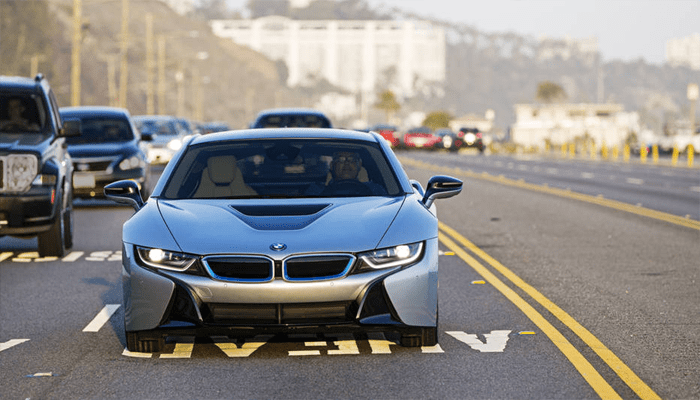BMW and Hyundai both earned top marks on technology usability in a new report out by J.D. Power, signifying that luxury and mass-market vehicles can do equally well satisfying customers with new technology.
A first of its kind for J.D. Power, the usability study found new vehicle owners are most satisfied with collision avoidance technology but still struggle with navigation systems, where many simply turn to a smartphone to substitute.
The BMW 2 series and 4 series ranked highest for the bcrand. Hyundai’s Genesis and Tucson also scored well on the survey, which looked at vehicle owner’s interaction and usage of technology used in collision protection, driving assistance, entertainment and connectivity, navigation, smartphone mirroring and comfort and convenience.
The Chevy Camaro, Kia Forte and Nissan Maxima also scored well.
The long development times for cars may hurt consumer ratings of many technology systems, said Kristin Kolodge, the report author and J.D. Power’s head of driver interaction.
In many cases, “a system might be working the way the engineers and designers have planned it,” Kolodge said. But “expectations change rapidly — change driven by other electronics in our lifestyle rapidly evolving into what the expectations are in our vehicle.”
Usability
Basic tech usability is a major factor in measuring overall product quality. Consumers “just want to be successful the first time they use a technology,” says Kolodge.
J.D. Power asked 17,864 new vehicle buyers to rate the functionality of in-vehicle technology. Safety systems like backup cameras, blind-spot warnings, and detection and lane-keeping ranked the highest in satisfaction, with a score of 754 our of J.D. Power’s 1000-point scale. These technologies were used nearly every time survey respondents drove.
But consumers are struggling with navigation technology, which achieved the study’s lowest score of 687 out of 1,000. In many cases, consumers will bring another device into the car as a substitute, leaving in-car navigation systems unused. Fifty-seven percent of those who brought in outside technology did so without ever trying OEM-provided solutions in the first place.
There is a disconnect between how consumers are using technology now and what they say they want, Kolodge said. They are willing to pay for difficult-to-use technologies like navigation and voice-recognition in vehicles despite underutilizing them once they buy the car.
“There’s a patience there that the industry should take advantage of” to improve the technology, Kolodge said. “It’s frankly a gift.”
| Segment | Highest ranked | Second | Third |
| Compact | Kia Forte | Scion iM | Mitsubishi Outlander |
| Compact Premium | BMW 4 Series | Lexus IS | Lincoln MKC |
| Small | Hyundai Tucson | Scion iA | Fiat 500X |
| Small Premium | BMW 2 series | Audi A3 | BMW X1 |
| Midsize | Chevrolet Camaro | Kia Sorento (tie) | |
| Nissan Murano (tie) | |||
| Midsize Premium | Hyundai Genesis | Cadillac CTS | Mercedes-Benz GLE-Class |
| Large | Nissan Maxima | Chevrolet Silverado LD | GMC Sierra LD |
Stepping stones
The two carmakers that lead the report’s segment winners, BMW and Hyundai, represent a narrowing of customer experience between luxury and non-luxury vehicles. Safety technology that was once found only in luxury cars has now filtered down to mass-market vehicles, Kolodge said.
In particular, she noted that blind-spot detection — which consumers have the option to turn off, unlike other safety technology — ranks highly among customer use. Kolodge said this acceptance could affect wider consumer reactions to upcoming self-driving technologies.
“These safety technologies are the initial building blocks to autonomous driving, Kolodge remarked. “An initial negative experience could add up.”
Car dealers have a big impact on overall satisfaction. Technology demonstrations at the time of purchase increased satisfaction by as much as 54 percent compared to customers who were self-taught or learned elsewhere, J.D. Power found.
In some cases, Kolodge said, customers just need to know the technology is there.
“Sometimes it’s just the sheer introduction of the technology,” Kolodge said. “At its simplest stage, (dealers should) make sure the consumer understands that they have the technology.”


